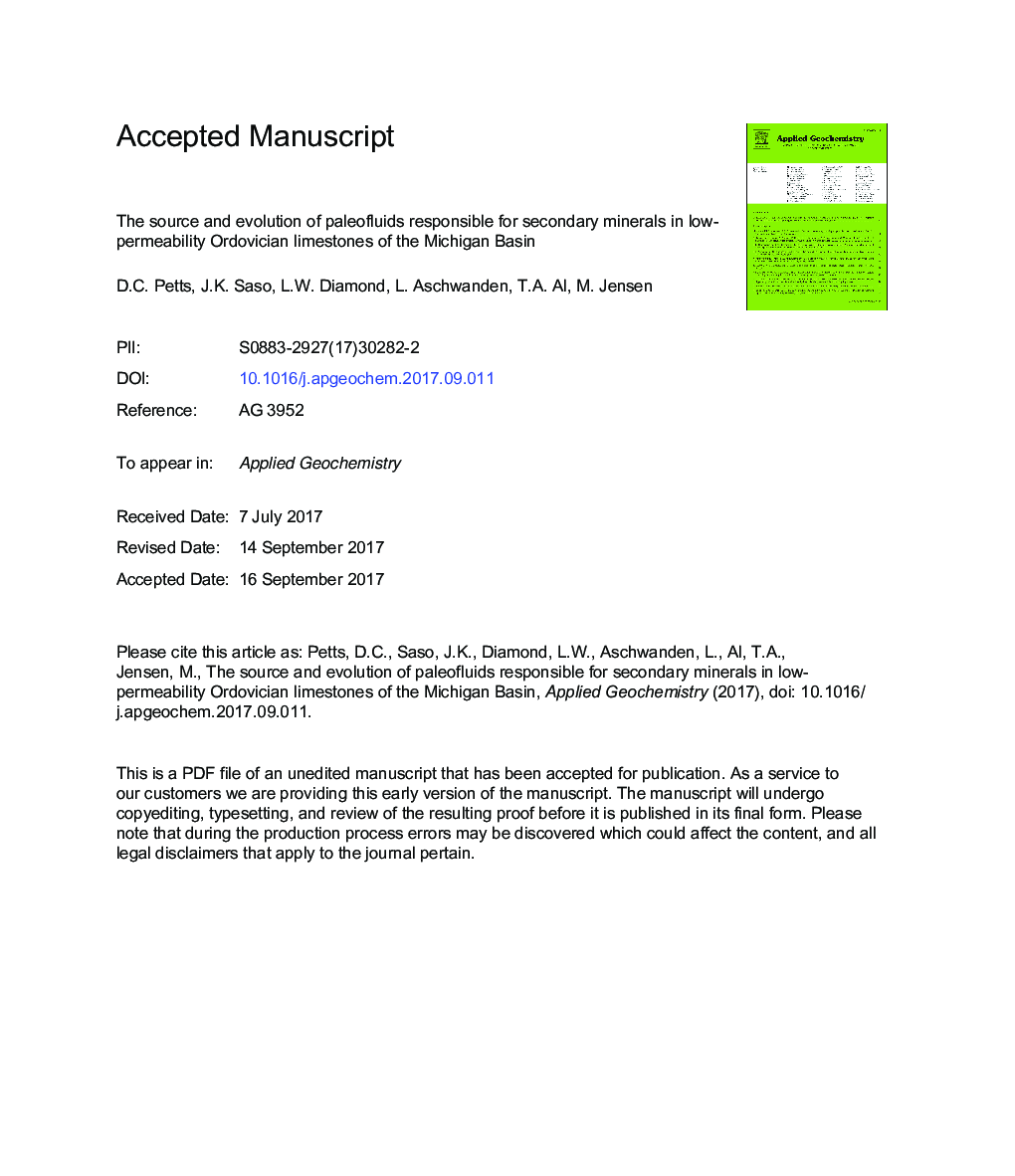| Article ID | Journal | Published Year | Pages | File Type |
|---|---|---|---|---|
| 8863286 | Applied Geochemistry | 2017 | 61 Pages |
Abstract
The combined microthermometric and isotopic data for secondary minerals in the Cambrian-Shadow Lake units suggest they formed from hydrothermal brine with a geochemical signature obtained by interaction with the underlying Precambrian shield, or shield-derived minerals in the Cambrian sandstones. Previous U-Pb dating of vein calcite and Rb-Sr dating of secondary K-feldspar from the region suggests that brine ingress occurred during the Late Ordovician-Silurian. The O- and Sr-isotope variability in vein samples from the Gull River and Coboconk formations is interpreted as localized mixing of 18O-enriched, connate fluids with hydrothermal brine. In comparison, isotopic data for the Trenton Group indicate secondary mineral formation from connate fluids, sourced from 18O-enriched, evolved seawater and/or modified hydrothermal brine that experienced fluid-rock interaction during transit through the underlying stratigraphy.
Keywords
Related Topics
Physical Sciences and Engineering
Earth and Planetary Sciences
Geochemistry and Petrology
Authors
D.C. Petts, J.K. Saso, L.W. Diamond, L. Aschwanden, T.A. Al, M. Jensen,
